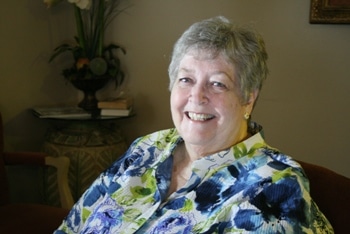
“I began to notice I couldn’t read weather warnings or news alerts on television,” says Kurka. “Colors were fading – everything looked dull and gray – and I couldn’t focus on the page when I read. That’s when I began looking for a doctor who could perform my cataract surgery.” Her search ended this past spring with Dr. David Richardson of Hattiesburg Eye Clinic.
But when Kurka made her decision to seek treatment, she had no idea it would coincide with the introduction by the clinic of a dynamic new option for cataract surgery. She, in fact, would become one of the first patients in Mississippi to undergo this breakthrough procedure using the new CATALYS® Precision Laser System, the most accurate and automated cataract surgical system in current use today.
Hattiesburg Eye Clinic is the first practice in the state to offer the CATALYS® surgical laser. The clinic’s three ophthalmologists, Drs. Richardson, Stoney Williamson and Todd Williamson agree the new system revolutionizes cataract surgery.
“I’ve been privileged to see a great amount of innovation in the field of cataract surgery during my career,” says Dr. Stoney Williamson. “I believe CATALYS® is so revolutionary it will quickly become the standard of care in cataract removal.”
Surgical lasers have just begun to be a part of cataract treatment and the CATALYS® system – the only system designed from the ground up for cataract surgery – takes the procedure to a new level of automation. Current laser systems only automate some of the tasks necessary to remove the natural eye lens clouded over by the cataract.
CATALYS® creates a “blade-free” procedure with the aid of advanced software that produces a highly accurate three-dimensional model of the patient’s eye. Based on this model the surgeon can use the system’s sophisticated computer algorithms to plan and implement each step in the procedure. The laser also makes contact with the patient’s eye using a unique liquid-filled docking ring that maintains the eye’s integrity for more precise incisions.
As a result, surgeons can complete a procedure on one eye in about thirty minutes, reduce complications after surgery and increase the likelihood that the greater precision will result in vision that restores – or even exceeds – the patient’s vision before cataract development.
“Because this procedure is so customized to the patient’s eye, we’re able to achieve a new level of accuracy and precision in blade-free cataract surgery,” says Dr. Todd Williamson. “Coupled with the very latest in IOL lenses, we’re going to see more patients with better vision than they had before the procedure, perhaps not needing glasses or contacts at all.”
Kurka’s experience mirrors the clinic physicians’ enthusiasm. “I didn’t feel any pain or discomfort at all during the procedure. After they put in first new lens in my right eye, I could immediately see colors again.”
Her vision after the procedure has returned to what it was when she was younger. “Besides colors, I can read again without reading glasses; and I can drive at night again – no more haloes around oncoming headlights.”
As do his colleagues, Dr. Richardson anticipates this will become a regular experience for many more patients who undergo cataract surgery with the CATALYS® system. “We’re very excited the outcomes we’ve already seen like Mrs. Kurka,” says Richardson. “I truly believe CATALYS® represents the most innovative advancement in cataract surgery in my lifetime.”
From a patient’s standpoint, Kurka is a believer in the new treatment option too. “I wish my mother, who was only able to have cataract surgery in one eye, could have had the benefit of this treatment. I truly hope it’s there for my children in the future if they need it.”


